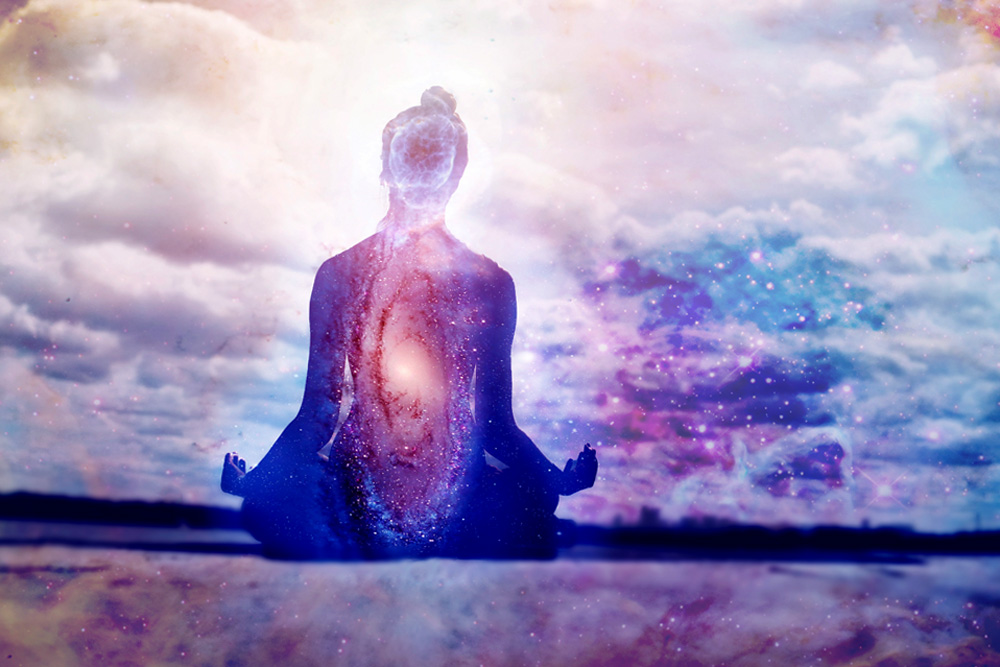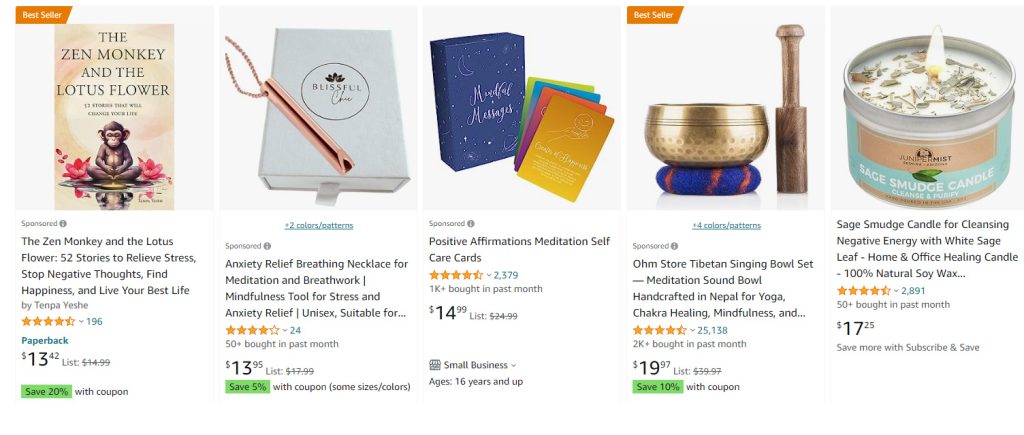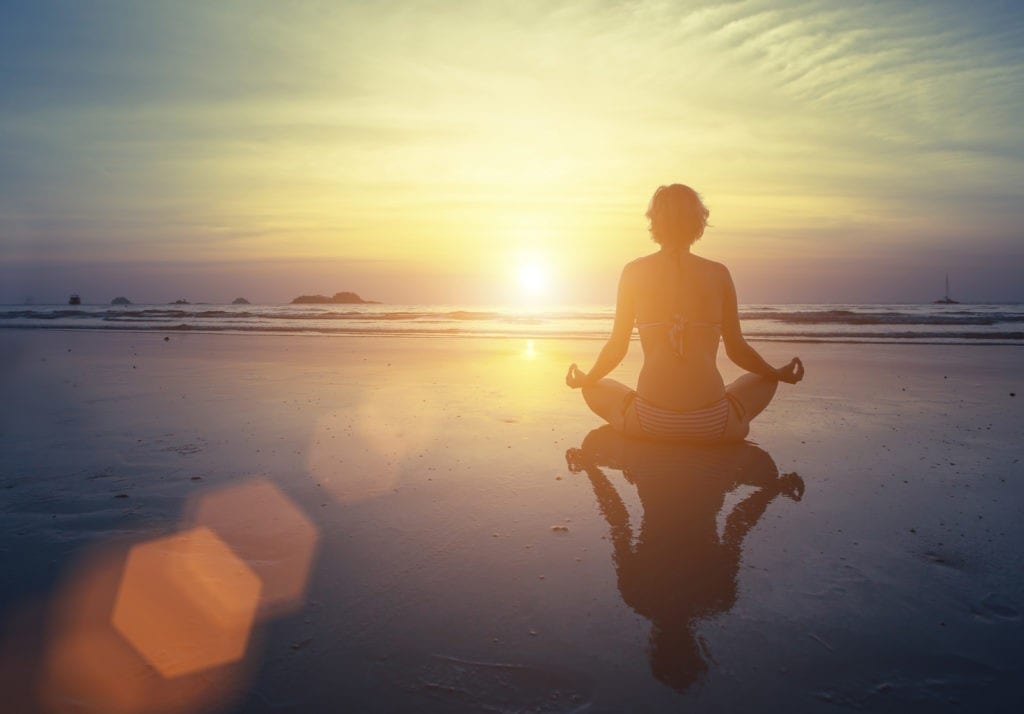Last Updated on March 30, 2025 by Avia
According to popular misconceptions, meditation is mostly performed by spiritual seekers striving for the ultimate meaning of life, or by yogis who are trying to attain enlightenment. In truth, meditation can be practiced by anyone, of any age or religious belief and for a myriad of reasons. And when it comes to meditation for beginners, you have a slew of options and opportunities in your midst.
In fact, studies have demonstrated that meditation can have a good influence on productivity, attention skills, stress tolerance, and overall health and wellness. So, if you’re stressed at work, perusing college homework help, trying to pay bills and manage your family, or just need more balance – meditation is an elegant solution for achieving almost anything you can imagine.
Ultimately, meditation is an incredibly helpful practice for everyone, every day. Read further about types of meditation for beginners, how it’s done and how it can be a positive force in your life.
Table of Contents
- BONUS! Start your meditation & Mindfulness Excursion With “Whispers of Tranquility” Meditation MP3 ⬇️⬇️⬇️
- Different Types of Meditation
- Meditation for Beginners and Active Minds
- What Are the Positive Effects of Meditation?
- Tips on How Long to Meditate
- When to Meditate
- Is There a Right or Wrong Way to Meditate?
- What About the Breath and Meditation for Beginners?
- When to Know You’re Making Progress
- The Last Word on Meditation for Beginners
BONUS! Start your meditation & Mindfulness Excursion With
“Whispers of Tranquility”
Meditation MP3
⬇️⬇️⬇️
Meditation Song “Whispers of Tranquility” Lyrics
"Whispers of Tranquility"
(A Meditation Song for Beginners)
[Verse 1]
Close your eyes, let the rain softly fall,
A gentle whisper, nature’s call.
Leaves on trees sway in the breeze,
Dancing light through emerald seas.
[Chorus]
Peace flows in, tranquility’s near,
Colors bloom, so vivid, so clear.
Ocean waves hum a lullaby low,
Beauty unfolds where stillness grows.
[Verse 2]
Golden rays kiss the flowers awake,
Petals soft, for your heart to take.
Fragrance drifts on the air so sweet,
Elegance blooms where earth and sky meet.
[Chorus]
Peace flows in, tranquility’s near,
Colors bloom, so vivid, so clear.
Ocean waves hum a lullaby low,
Beauty unfolds where stillness grows.
[Bridge]
Breathe in deep, let the silence sing,
Nature’s embrace, a tender thing.
Raindrop gleams, a prism of light,
Leaves and waves cradle day into night.
[Chorus]
Peace flows in, tranquility’s near,
Colors bloom, so vivid, so clear.
Ocean waves hum a lullaby low,
Beauty unfolds where stillness grows.
[Outro]
Rest right here, let your spirit be free,
In nature’s arms, just you and me.
Rain and flowers, waves and trees,
Tranquility reigns in eternal peace.
Different Types of Meditation
Meditation has several advantages, including the restoration and repair of nerves, the reduction of stress, the relaxation of the mind, and rebooting consciousness. There are several different meditation techniques are available for you to try.
Mindfulness-Based Meditation (MBSR)
This is a type of meditation that assists practitioners in cleansing their minds and learning how to control them. The end result will be the ability to cultivate an inner state of serenity and awareness in both your mind and body.
Mindfulness for beginners’ is a practice that involves de-stressing and monitoring the present moment in a non-judgmental, suspended manner. Its purpose is to go within, still the mind, be present in the moment in order to gain clarity and better focus. This is a great meditation for beginners.
Visual Meditation
In other types of contemplation, thoughts and experiences are frequently mixed with images to create a more complete picture. These meditations are intended to assist us in regulating our consciousness as well as our energy levels. The purpose of this meditation is to hold an image firmly in the mind so that it overcomes the distractions.
By doing this, one can absorb the mental image, and thus it becomes a part of the structure of the mind, body, and soul. In effect, what is viewed through the mind’s eye is so engrained; it is eventually manifested into reality.
Breathing Meditation
As the name implies, this meditation focuses on the breath. It’s an ideal type of meditation for beginners because it’s as simple as following the breath in and out of the lungs. The idea here is that the mind becomes distracted and lulled by the rhythm of the breath.
The breath becomes almost a hypnotic factor that calms the mind into a state of “no-thought” which is the ultimate goal. The results of this meditation are healing for the mind and body. It stills the active mind as well as helps circulation in the lungs, blood, and body.
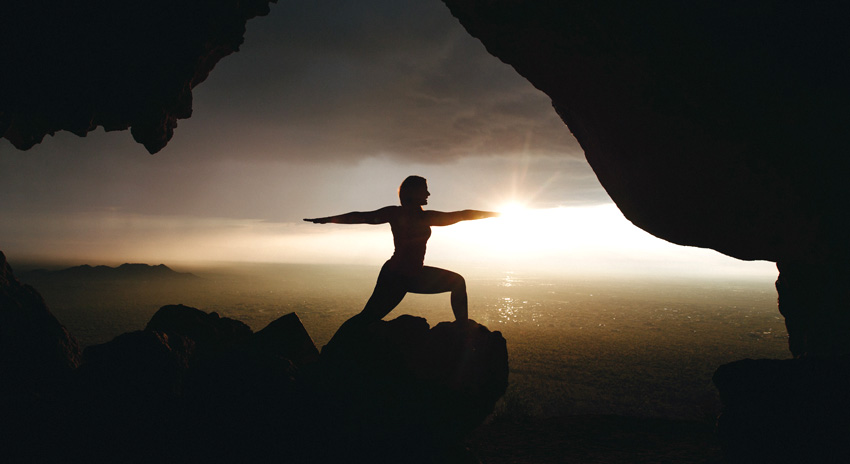
Body Meditation
It is possible to achieve stress reduction, enhanced sentiments of love and pleasure in the heart, as well as physical well-being, via the practice of meditation that is focused on the neurological system. This is when a meditation student mentally runs their thoughts through the body – visualizing the circulatory system, neurological pathways, muscle tissue, etc.
Through the practice of this meditation, one can attain stress reduction and relaxation at the same time. Relaxation, cleansing, healing, and release from unpleasant states of awareness are achieved with body meditations.
Active Meditation
This is a great meditation to try if you have an active mind, or find traditional meditation isn’t suitable for you. Active meditation is when you are using physical movements in order to ease you into higher consciousness. For example, focusing on footsteps during a walk is a type of active meditation.
Even working in the garden can be a mesmerizing experience that can soothe the mind outside of superficial thought. Believe it or not, even washing dishes can be an active meditation. The point here is to participate in repetitive physical activities in which you can focus on the repeating motions. Doing this lulls the mind into a deeper space, which is ultimately what meditation is all about.
Yoga and Meditation
Yoga is a form of bodily, active meditation. It is helpful because it prompts the mind to go outside of itself and focus on the body. When practicing yoga, the most important rule to remember is to keep your spine straight, your chest open, and your body as calm as possible. Beginners can start by sitting comfortably in a chair, relaxing, and closing their eyes.
Deep breathing, moderate muscular relaxation, and letting go of your thoughts are all good ways to start yoga meditations. If you are experiencing stiffness and unpleasantness as a result of your efforts to breathe in longer or deeper, you should ease up. Remember, yoga meditation isn’t a competition and it’s never meant to cause pain. As opposed to pressure or pain, yoga meditation promotes a loving and reverent attitude toward oneself and one’s body, making it suited for all ages and stages of life.
Meditation for Beginners and Active Minds
Many people say “I can’t meditate because I can’t sit still,” or, “What are meditation tips for active minds?” These questions are often prompted by people who struggle with attention deficit conditions or have over-active minds. Ironically, meditation can be the cure for attention difficulties.
With practice, you can still the mind to the point where all the thoughts scrambling through the mind start to settle and eventually dissolve into silence. The same is true with attention. Meditation can help you focus and zero in on goals, objectives, or simply become more centered and balanced.
After a hard day at work, a rigorous semester at school, a strenuous workout, or a relaxing vacation, we all want to unwind and clear our thoughts of all the stresses of everyday life. If you want to achieve the greatest outcomes, it is critical to becoming familiar with the wonders and benefits of meditation for beginners with active minds and busy lifestyles.
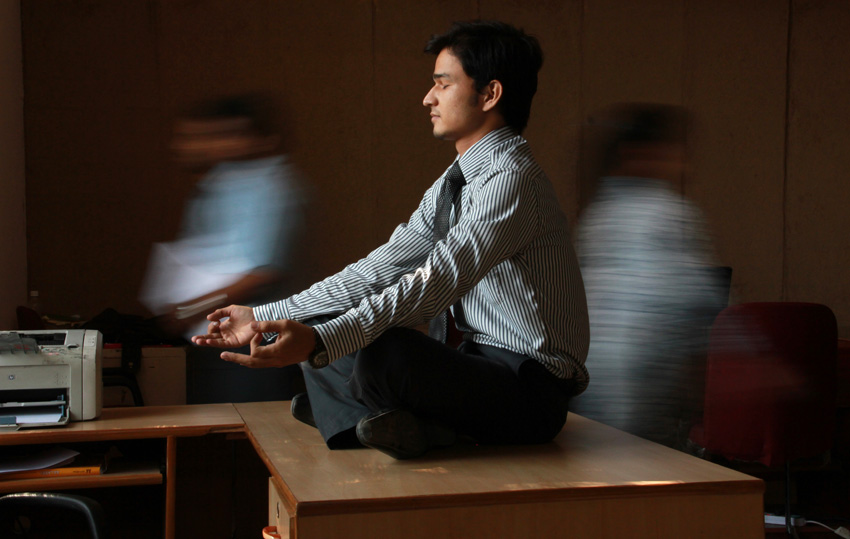
What Are the Positive Effects of Meditation?
Meditation can assist those who lead a hectic lifestyle or recover from both physical and mental weariness via the use of various techniques. As a result, it brings about a state of profound relaxation by easing and calming the mind and body and allowing the body to return to a state of balance and wholeness.
Meditation can also assist athletes, performers, and businesspeople in remaining calm and focused throughout practice and competition. As a consequence, visual meditation may be able to help performers foresee and anticipate more favorable outcomes.
The degree of consciousness and the ability to discern the boundaries of reality in those who meditate on a daily basis significantly improves focus, energy, emotional wellbeing, and physical health. For example, people who meditate upon the joy in their everyday lives, have a more positive attitude on life and are more likely to experience positive outcomes more frequently.
Tips on How Long to Meditate
Meditation may appear to be tedious at first, resulting in a lack of excitement for the practice of meditation. Avoid that by starting out simple, small, and easy. Begin meditating with a baby step approach.
New practitioners of meditation can’t expect to meditate 3 hours their first time out. Instead, start small by meditating in short spurts throughout the day. Practice stilling the mind for 3-5 minutes at a time.
Eventually, increase your meditation sessions to 10 and 15 minutes in length on average. Keep increasing the time you are in meditation while you grow in your practice. Pay attention to yourself and your reaction to your sessions. If you feel 3-5 minutes is sufficient and you’re seeing positive results – then feel free to keep your mindfulness practice in that timeframe. But it doesn’t hurt to increase if you feel inspired to do so.
Alternatively, you may find you an hour-long meditation is your ultimate sweet spot. The lovely thing about meditation is that it is a personal experience. You call the shots. Do what feels best for you.
When to Meditate
The most beneficial time of day to meditate is determined by your own tastes. Some individuals like to get up in the wee hours of the morning because they feel more aware and invigorated at this time. People who have had a hard day at work may prefer to meditate in the evenings. This helps them unwind and clear their minds. Practice meditating during different times of the day or night. Eventually, you will find the perfect time to meditate that suits your needs.
Is There a Right or Wrong Way to Meditate?
In a word, no. Meditation is 100% personal and unique to you. When it comes to deciding which strategy is ideal for you, it all comes down to what you need. For example, you don’t have to stay in the lotus position. You don’t have to practice mudras either.
There are as many ways to meditate as there are personal preferences. For instance, you might engage in open-eye meditation in which you are focusing on something like a candle flame or a flower. Of course, closed-eye meditation is a popular choice too.
You can even do active meditations where you become lulled into mindfulness by walking a labyrinth, hiking, or gardening. and closed-eye meditation practices. It is possible to do it even while walking.
Although the ability to “let go of thoughts” appears to be simple, it is a skill that takes practice. When you first start, you might be inundated with thoughts, which might prevent you from being able to completely rest. This is something that is natural in meditation for beginners.
Don’t berate yourself for being unable to concentrate. Avoid convincing yourself that you’re doing something wrong. Instead, simply redirect your attention to the anchor of your focus.
Lastly, it’s important to note that the road to enlightenment should not be imposed or forced. Rather, it will occur organically as a byproduct of the practice itself.
Understand that the brain is unable to stop functioning because it’s working constantly you’re your survival. That’s okay; it’s natural. That’s why you can find ways to meditate that work for you and find techniques that work with your own brain structure. Over time, you will become more adept at being calm, no matter how many thoughts enter your mind.
What About the Breath and Meditation for Beginners?
The most important aspect of meditation people start with is being concentrated on the way they breathe. In fact, concentration on the breath is a touchstone for meditation for beginners. The breath serves as a fundamental anchor of focus.
Begin by focusing your attention on your breath for a few minutes at a time to get a feel for it. Maintaining your composure is essential in this situation. It’s totally acceptable if your ideas become confused and jumbled. Simply return your attention to whatever it is that you are meditating on, in this case, your breath.
Your reduced level of distraction is a significant indicator that you are making progress. Through repetition, you will eventually be able to sit for 5 minutes straight without being distracted. You may finally increase your practice time to 30 minutes by gradually increasing the amount of time you spend practicing.
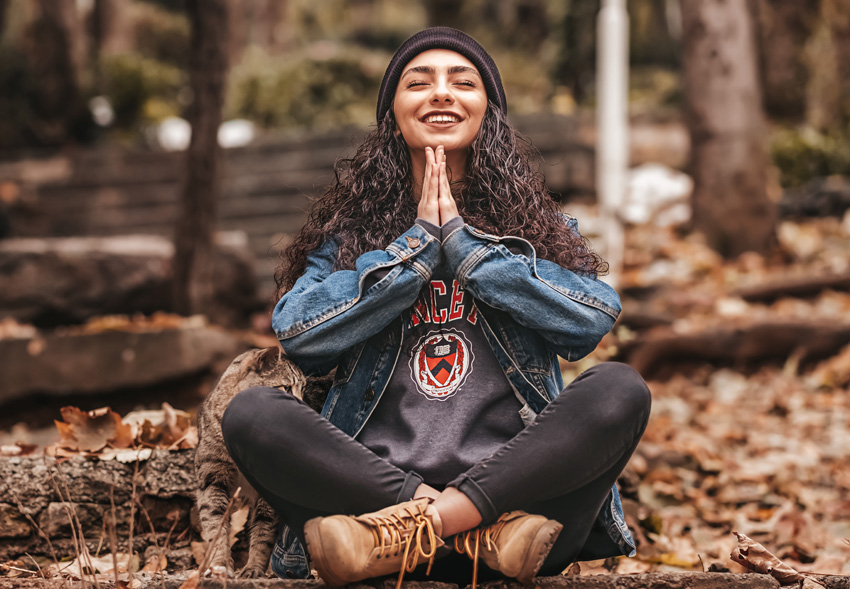
When to Know You’re Making Progress
In the advanced stages of meditation, practitioners reach the point where they dissolve into the object of their meditation and become one with it. You’re making progress when the distractions of the everyday, critical mind begin to become less distractive. You may also detect progress when the ego vanishes, the sense of individuality recedes, and the notion of individuality is completely absent when performing the meditation itself.
In general, meditation techniques coax the awareness to extend its bounds beyond superficial, surface levels. There are no external variables involved in the process of contemplative practice other than one’s own thoughts and this is because contemplative practice is an internal activity.
The Last Word on Meditation for Beginners
If you want to see effects through meditation, you must make a commitment to do so. It’s only a matter of time until the benefits of this exercise begin to manifest themselves in the actual world when you begin to execute it on a daily basis.
You will come to comprehend yourself and your world in ways that might have been unreachable or unimaginable before you started meditating. You’ll see things that were previously insignificant in a different light and gain a new perspective on them, which will help you live a happier and more fulfilling life.
Mighty brightly,

© Copyrighted. All Rights Reserved.

